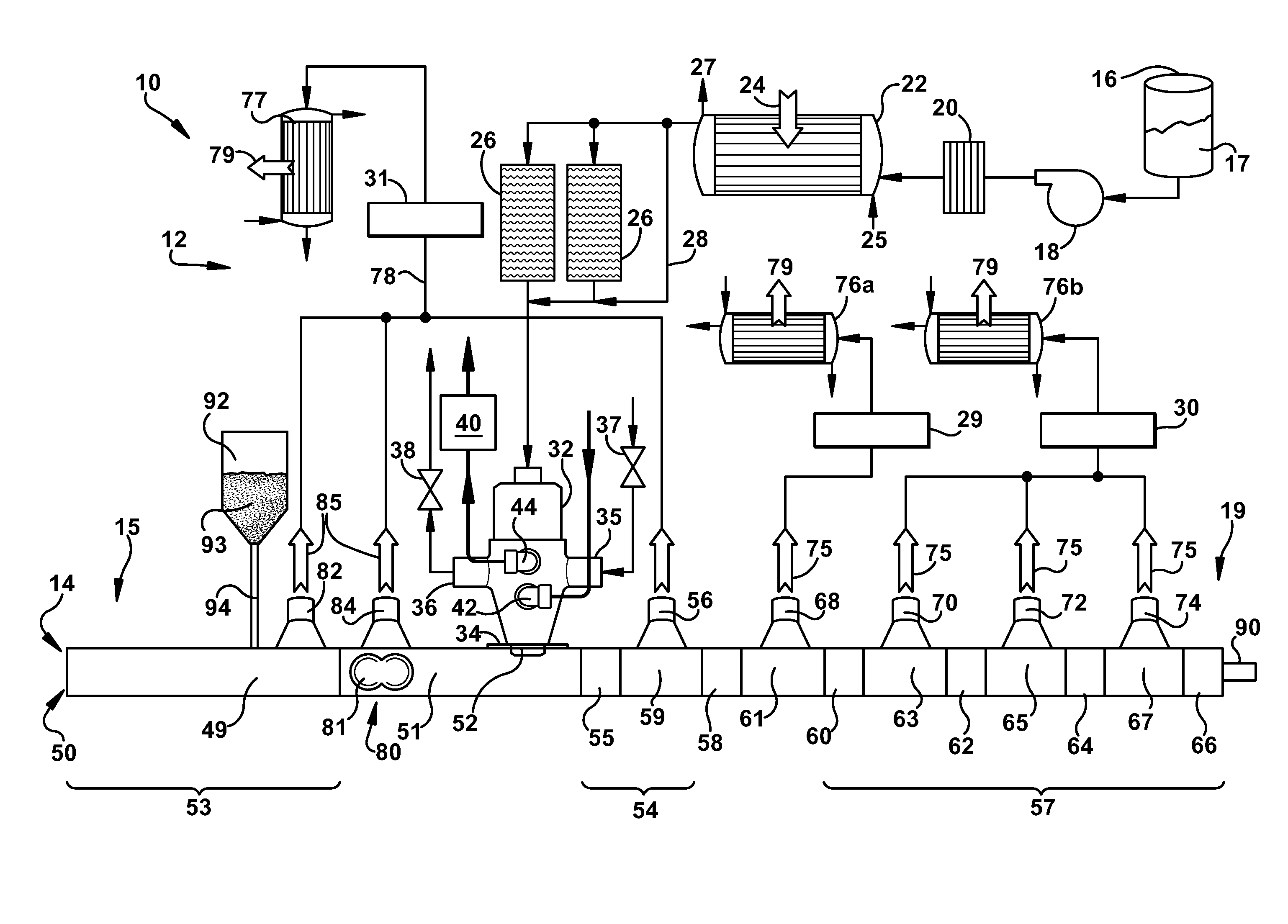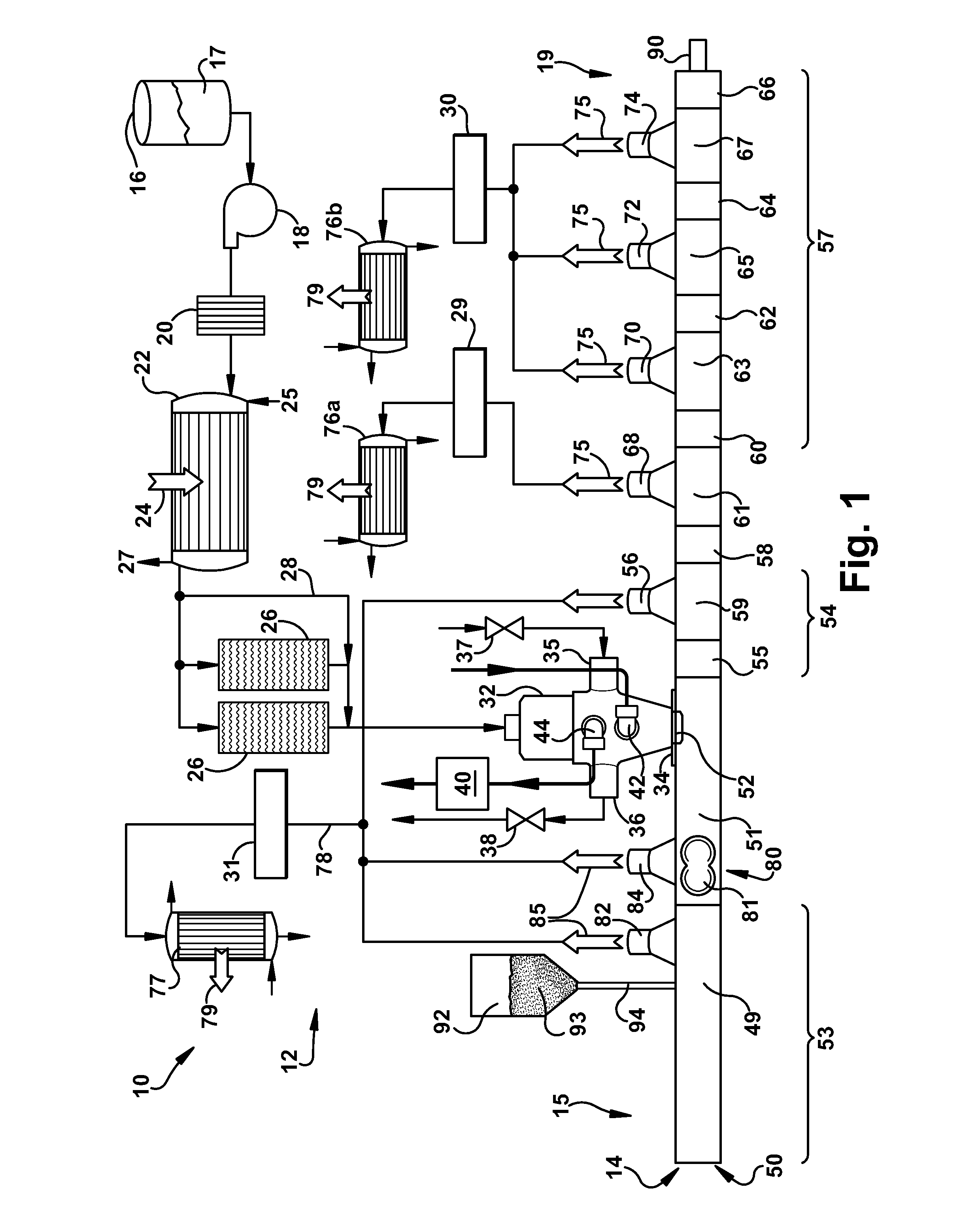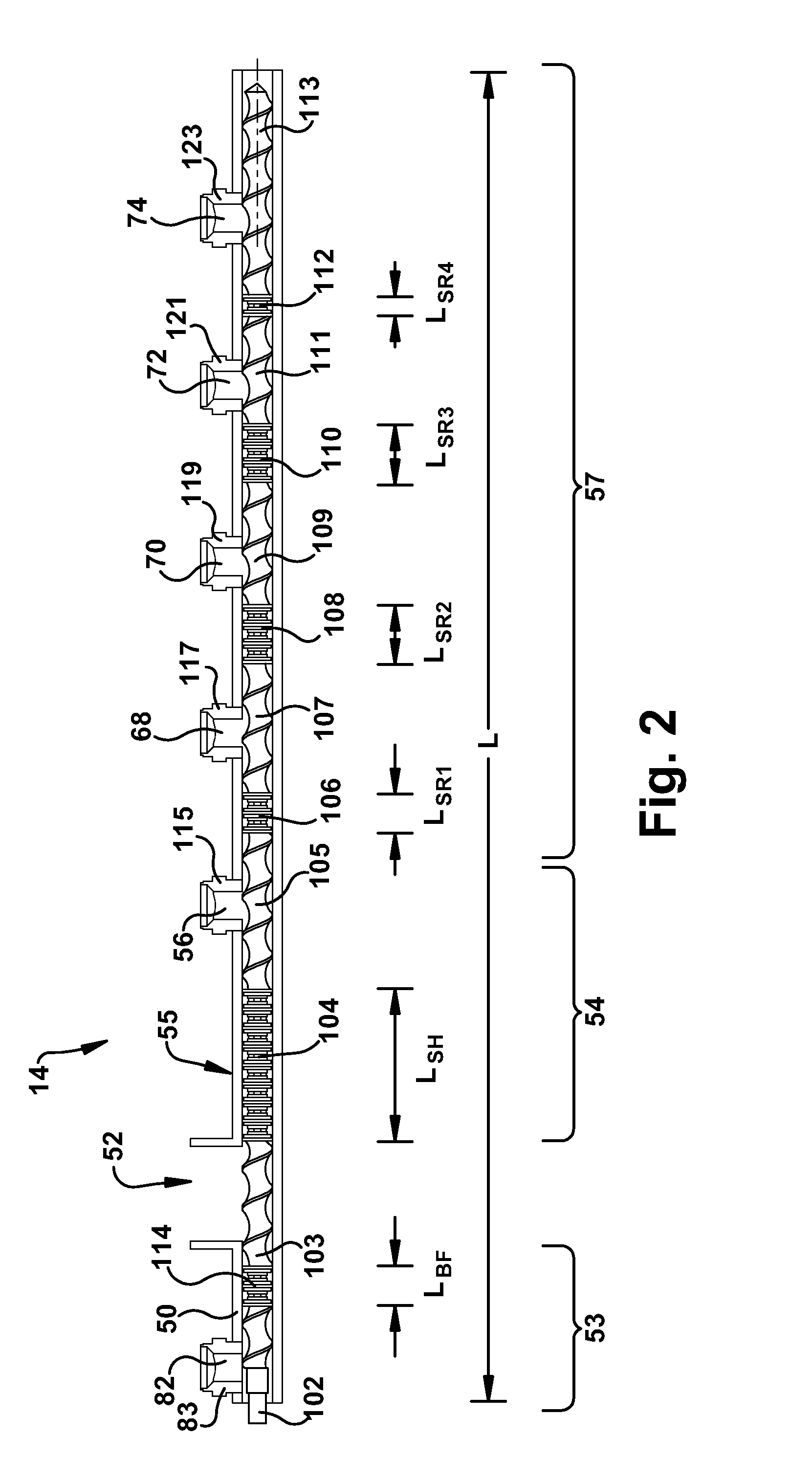Apparatus and method of separating a polymer from a solvent
a technology of solvent and apparatus, applied in the field of apparatus and method of separating a polymer from a solvent, can solve the problems of high heat, extended compounding and extruding time, and high shear ra
- Summary
- Abstract
- Description
- Claims
- Application Information
AI Technical Summary
Problems solved by technology
Method used
Image
Examples
examples 1 through 6
[0110]Equipment, Materials and Procedures:
[0111]A laboratory scale extruder similar to the arrangement as shown in FIGS. 2 and 9 was used to separate an Ultem polymer from dilute solutions of the polymer in a solvent or a mixture of solvents. This process included a 25 mm-diameter, co-rotating intermeshing twin-screw extruder, that contained ten barrels (extruder length-to-diameter ratio equal to 40 The extruder apparatus included six vents, three of which were operated at atmospheric pressure or slight vacuum, and the remaining three vents were operated at different levels of vacuum. A heat exchanger, and pressure-controlled valve were used upstream of the extruder to produce a, super-heated Ultem / solvent solution that can be fed continuously to the extruder. The two screws used in the extruder include kneading blocks of different design, and a series of double-flighted, conveying screw elements to transport the melt forward and to also accommodate the solvent vapors produced by th...
examples 7 through 10
[0118]Equipment, Materials and Procedure
[0119]In the following Examples and Comparative Example, the effect of design features of the extrusion apparatus on the polymer isolation process was evaluated in terms of heat balance of the process and also the residual solvent and retention of molecular weight in the final product.
[0120]In Examples 7-9 an extrusion apparatus of the arrangement shown in FIG. 9 was used and in Example 10 (Comparative) an extrusion apparatus of the design shown in FIG. 10 was used to carry out the polymer isolation process. In all of the Examples described herein, the polyetherimide of the polyetherimide-solvent solutions. is used with ULTEM® XH polyetherimide which is commercially available from SABIC Innovative Plastics, Mt Vernon, Ind.
[0121]The polymer isolation process of all Examples were carried out practicing the following procedure. A superheated polymer-solvent mixture was introduced into extruder apparatus 14, and the polymer product that resulted w...
example 7
[0123]The polymer isolation process of Example 7 was carried out using an extrusion apparatus as shown in FIG. 9. The extrusion apparatus 14 included a hollow member 50 having a feed port, an upstream portion 53 and a downstream portion 54. The hollow member 50 contained a co-rotating, intermeshing (i.e. self wiping) twin-screws screws having a diameter, D, 58 millimeters and extending from the upstream portion 53 to the downstream portion 54. The internal superheating section 55 was disposed between the feed port 52 and the forward flash vent opening 56. The hollow member had eight (8) vent openings, five downstream vent openings 56, 68, 70, 72 and three upstream vent openings 134, 135, and 136. Four vent openings including the three upstream vent openings 134, 135 and 136 and one downstream vent opening 56, were operated at about atmospheric pressure and the remaining four downstream vent openings 68, 70, 72 and 74 were operated at sub-atmospheric pressure. Vent inserts 115, 117 w...
PUM
| Property | Measurement | Unit |
|---|---|---|
| diameter | aaaaa | aaaaa |
| boiling point | aaaaa | aaaaa |
| length | aaaaa | aaaaa |
Abstract
Description
Claims
Application Information
 Login to View More
Login to View More - R&D
- Intellectual Property
- Life Sciences
- Materials
- Tech Scout
- Unparalleled Data Quality
- Higher Quality Content
- 60% Fewer Hallucinations
Browse by: Latest US Patents, China's latest patents, Technical Efficacy Thesaurus, Application Domain, Technology Topic, Popular Technical Reports.
© 2025 PatSnap. All rights reserved.Legal|Privacy policy|Modern Slavery Act Transparency Statement|Sitemap|About US| Contact US: help@patsnap.com



